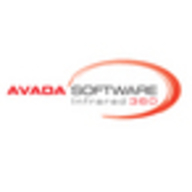

Avada Software Infrared360 and Sumo Logic Observability compete in observability and infrastructure monitoring. Sumo Logic Observability has the upper hand with superior comprehensive features, although Avada Software Infrared360 is preferred for support and pricing.
Features: Avada Software Infrared360 provides robust monitoring tools, comprehensive metrics, and reliable performance alerts. Sumo Logic Observability offers powerful analytics, advanced log management, and extensive data visualization options.
Room for Improvement: Avada Software Infrared360 could improve enhanced reporting capabilities, more intuitive navigation, and mobile app functionality. Sumo Logic Observability needs reduced complexity, better integration options, and faster query performance.
Ease of Deployment and Customer Service: Avada Software Infrared360 has a straightforward deployment process and excellent customer service. Sumo Logic Observability is sometimes more complex to deploy but also has high-caliber customer support.
Pricing and ROI: Avada Software Infrared360 offers competitive pricing and satisfactory ROI. Sumo Logic Observability, despite higher pricing, is considered valuable for its feature set and perceived long-term benefits.
| Product | Market Share (%) |
|---|---|
| Sumo Logic Observability | 0.4% |
| Avada Software Infrared360 | 0.3% |
| Other | 99.3% |

| Company Size | Count |
|---|---|
| Small Business | 4 |
| Midsize Enterprise | 5 |
| Large Enterprise | 5 |
Avada Software specializes in Enterprise Middleware solutions. Founded by some pioneers in SOA, MQ and J2EE technology, Avada’s Flagship product, Infrared360, is a holistic & innovative private cloud enabled portal providing self-service administration, monitoring, load testing, auditing & statistical reporting for Enterprise Middleware including IBM’s middleware stack of MQ, IIB (message broker), WAS, and Datapower, as well as other applications servers such as JBoss, TC Server, Weblogic, and other messaging technologies such as Tibco EMS and Kafka*.
Accessed via any web browser on any device, Infrared360 is a single web application, yet scales to 2500+ endpoints without deploying anything (no agents, no scripts) to those endpoints.
Using trusted ‘spaces’ and delegated visibility and control, the portal uniquely provides different business units or even different application users virtual ‘spaces’ in which to work. Within those spaces are only the objects and resources the user has been granted visibility. Role policy dictates permissions on those resources.
It is the ONLY Enterprise Messaging Solution with a built in SOA engine that lets you leverage internal and external services for managing and correcting problems within your middleware messaging environment.
*Kafka coming soon
Sumo Logic Observability offers advanced monitoring solutions with features like integrated dashboards and querying capabilities, though presents a learning curve compared to alternatives. Designed for efficient log aggregation and analysis, it provides near-real-time updates facilitating improved incident resolution.
Sumo Logic Observability stands out with its ability to unify teams through a single platform, offering features that include customizable dashboards and valuable apps. It provides powerful log tracing and centralized management, designed for organizations focused on log aggregation, analysis, and expanding SIEM capabilities. While it has a steeper learning curve compared to some competitors, it excels in tailored integrations that enhance log searches. Users find themselves able to monitor, automate, and centralize log repositories for effective debugging. Despite its strengths, improvements in data enrichment and documentation organization are needed as current query functions can be slow, impacting efficiency. Users have also mentioned needing pre-built dashboards and better tab management for enhanced functionality. Cost management remains a notable consideration for users evaluating Sumo Logic Observability.
What features make Sumo Logic Observability effective?Sumo Logic Observability is implemented across industries predominantly for managing and analyzing extensive data sets, offering capabilities critical for SIEM activities and security examinations. By facilitating quick data visualization and transaction tracking, organizations in sectors such as finance, healthcare, and technology benefit from its robust framework to support infrastructure logging and large-scale data management, contributing to effective monitoring and system operations.
We monitor all Application Performance Monitoring (APM) and Observability reviews to prevent fraudulent reviews and keep review quality high. We do not post reviews by company employees or direct competitors. We validate each review for authenticity via cross-reference with LinkedIn, and personal follow-up with the reviewer when necessary.